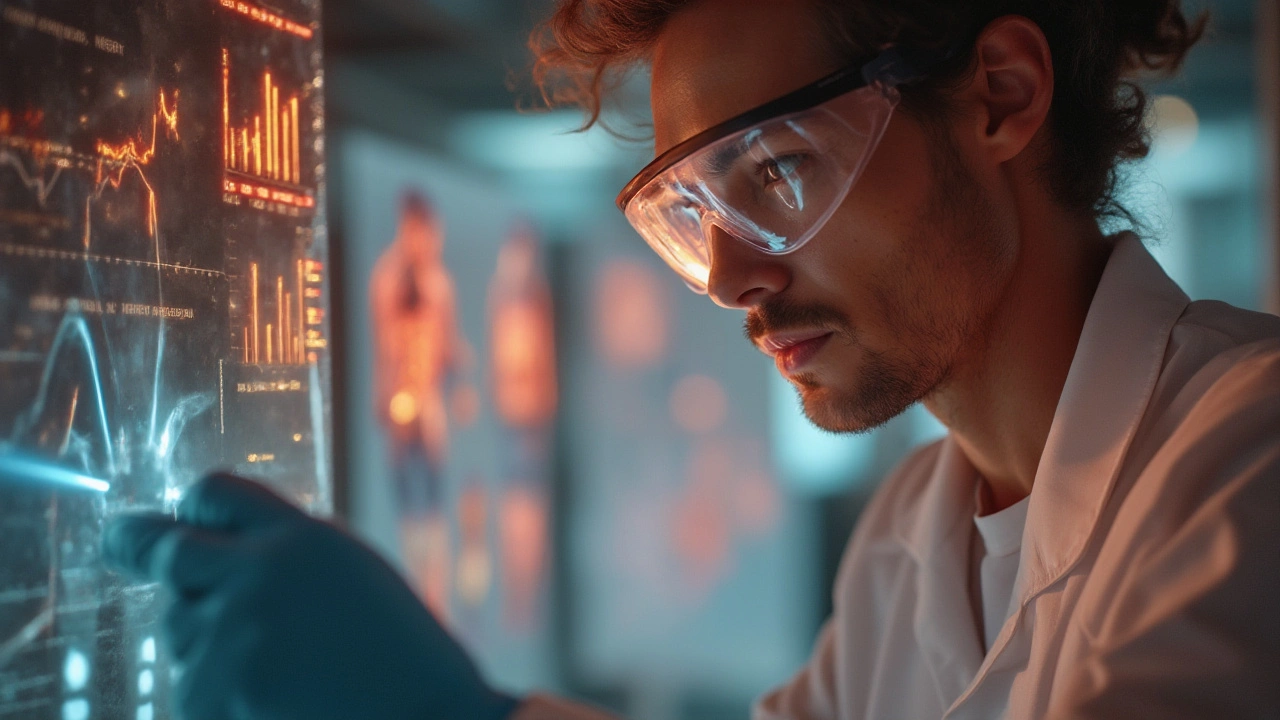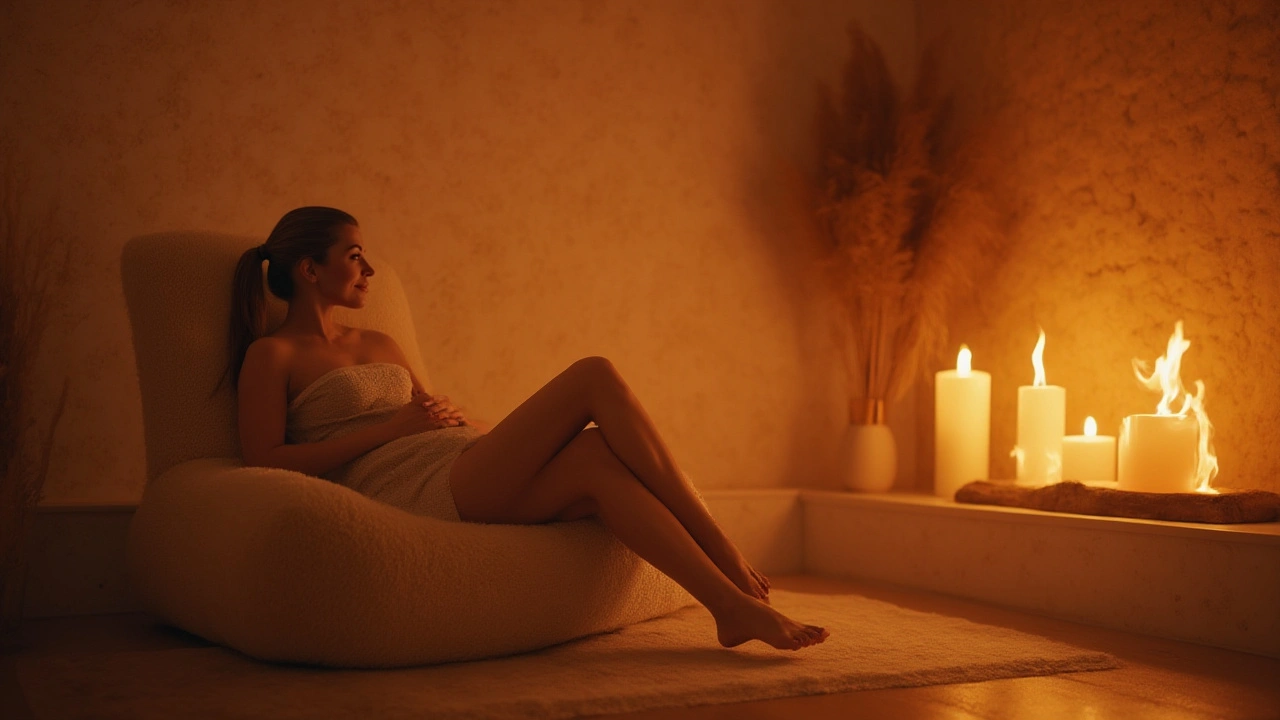Picture this: someone lays a towel soaked in herbs and alcohol on your back. Then, a therapist lights it on fire. No, it’s not a scene from an action movie—it’s a fire massage, a therapy that’s drawing the adventurous and the curious. This isn’t about survival tricks or showmanship; it’s a legit treatment found in spas from Beijing to Bangkok. The experience is hotter than a summer sidewalk barefoot sprint, and people swear it melts away more than just aches. But does it really work, and what’s the real story behind this blazing trend?
What Exactly is Fire Massage?
Fire massage, sometimes called "huǒ liáo" in Chinese, is part therapy, part spectacle. The process looks daring: therapists quickly light a towel on your skin, then just as swiftly smother the flames. But it’s not about burning you—it’s about targeting acupoints and muscle zones with the careful use of heat. The therapist usually uses a protective, damp towel as a barrier, lays another towel soaked in herbal alcohol on top, then sets it on fire. After a few seconds, they douse the flame.
What’s the point of the fire? Practitioners claim the heat penetrates muscles, dilates blood vessels, and helps the body flush out toxins. Supposedly, the sudden warmth triggers a deep relaxation response. Locals in some parts of China and Vietnam have had this therapy for generations. It’s only recently caught on outside Asia as tourists and wellness seekers brought home wild stories (and TikTok videos) of their fiery treatments. One fire massage can last for anywhere from 20 to 45 minutes, though the direct burning part only lasts seconds at a time on each spot.
People typically go in for different reasons—chronic back pain, muscle knots, fatigue, or just for the thrill. And yes, some see it as an anti-aging or weight-loss booster, though scientists roll their eyes at the wilder claims. But what can’t be denied is the adrenaline rush. Think of it as the difference between jumping into a cold plunge and just taking a chilly shower. There’s an edge of danger that makes you hyper-aware, alert, and afterwards, deeply calm.
And honestly, the ritual feels ancient—even mystical. Some spas burn a blend of rice wine, traditional herbs, and essential oils so the room smells more like a temple than a clinic. Others play rhythmic music and use gentle massage before and after the flames. But is there anything more than just a wild story to tell friends? Let’s find out what’s beneath the surface, literally and figuratively.
The Science and History Behind Fire Massage
This isn’t some Instagram-era stunt. Fire therapy’s roots reach back centuries. Ancient Chinese medical texts mention using controlled flame and heat for healing, and similar techniques appear in Tibetan and Vietnamese traditions. Why? Because heat is a universal therapy—nearly every culture has some version of hot stone massage, saunas, or steam baths.
What makes fire massage different is the speed and intensity of the heat. While a hot stone gently seeps warmth, fire delivers a fast jolt. This sudden exposure stimulates what physiologists call the "heat shock response"—a process where your cells temporarily increase protective proteins and boost circulation. This can help muscle fibers relax and blood flow increase, speeding up recovery after activity, according to a small 2017 clinical study from Shandong University that tracked inflammation after deep-tissue work with and without fire. They found that adding fire cut muscle soreness time by nearly half compared to regular massage alone—participants reported relief in 24 hours instead of 48.
Is the science bulletproof? Not yet. Most studies are small and often region-specific since fire massage hasn’t been widely studied outside East Asia. But pain specialists who see anecdotal results say it makes sense: fast, deep heat can break the pain-spasm cycle better than standard warm towels. Plus, anyone who’s ever used a heating pad knows the basics benefit of focused heat: it boosts circulation, soothes nerves, and speeds healing.
There’s also a psychological factor in play. Fire releases adrenaline and endorphins—natural stress fighters and mood lifters. You’re also flooded with relief once the towel cools, amplifying relaxation. In traditional settings, the ritual is designed to calm both body and mind, using herbs that supposedly support immune health and rebalance energy.
Curious how hot things actually get during a session? The towel’s surface may flash to over 100°C (212°F) at the ignition point, but thanks to the damp barrier towels and expert hands, the skin surface temp rarely jumps above 45°C (113°F)—about what you’d feel in a very hot bath. Burns and blisters are extremely rare when done by a pro. Here’s a snapshot of some findings on fire massage’s measurable effects:
| Effect | Reported Outcome (Study) |
|---|---|
| Muscle Soreness | Reduced by 48% in 24 hours (Shandong Univ., 2017) |
| Blood Circulation | Improved microcirculation by 37% (Shanghai TCM Hosp., 2019) |
| Stress Hormones | Cortisol dropped by 22% post-session (Guangdong Wellness Survey, 2023) |
| Injury Risk | <0.5% when done professionally (China Spa Safety Board, 2022) |
Ask around in Beijing or Saigon and you’ll hear grandparents swear by fire massage for everything from winter chills to stubborn neuralgia. Part of its current mystique is that blend of science, folk wisdom, and spectacle—something Western clinics are only just starting to catch onto. For those willing to try, fiery bodywork is as much about tradition and ritual as it is about muscle relief.

Health Benefits and Potential Drawbacks
Most people come out of a fire massage feeling lighter—sometimes literally, since sweating can be intense. Stress relief stands out as the top reason folks rebook. When your body goes through the quick heat/cool cycle, your nervous system gets a reset, flipping from fight-or-flight to chill-out mode. If you wrestle with tension headaches, stubborn knots, or racing thoughts, that’s a game-changer.
Regulars say it helps with insomnia and anxiety, probably because of how the heat calms the muscles and signals the brain it’s safe to relax. Some professional athletes use fire massage after hard workouts, claiming it speeds muscle repair and cuts down lactic acid buildup. This isn’t just placebo—a 2019 experiment from Shanghai Traditional Chinese Medicine Hospital found athletes’ microcirculation jumped nearly 40% after fire therapy compared to 17% with a standard hot towel.
Other pluses? Skin often looks pink and glowing right after. That’s from improved blood flow and mild exfoliation, not any miracle anti-aging. People with chronic pain—from arthritis to sciatica—sometimes find relief for hours or even days after a session. That’s a big deal, considering that most heat therapies only last as long as the application.
But nobody’s pretending there are no risks. If you have super-sensitive skin or certain medical conditions—eczema, open wounds, heart issues, or neurological disorders—fire massage is probably not for you. Allergies to herbal infusions or alcohol can also be a danger. Stories do surface of undertrained therapists causing burns, so you need to pick clinics with strict safety protocols and plenty of experience. Ask to see licenses and training certificates. A recent poll by the China Spa Safety Board tracked fewer than a handful of major incidents out of tens of thousands of sessions each year, but still—don’t roll the dice on someone without credentials.
Feel a prickle or sting during the session? Speak up immediately. The best therapists will constantly check how you’re feeling, smoothing out nerves as much as muscles. Avoid fire massage if you’re pregnant, have blood clotting disorders, or if you’re taking certain medication (like blood thinners) unless you’ve cleared it with your doctor. Finally, remember: no alternative therapy can fix everything. If you’re hunting for a cure for something serious, see it as a supplement to, not a substitute for, real medical care.
- Best for: tension, chronic pain, post-workout muscle relief, stress
- Not for: skin conditions, pregnancy, heart or nerve issues, allergies
- Need: reputable spa, trained therapist, pre-session checkup
What to Expect at Your First Fire Massage Session
Nervous? Most first-timers are. Here’s a play-by-play so you know exactly what to expect. The atmosphere is usually low-lit and calming—think incense, soft sounds, and a gentle pre-massage to loosen up. The therapist will chat with you about any injuries, allergies, or stress areas, maybe even have you fill out a quick health form. Then, as you lie on the table, they cover your back (or other treatment area) with layers: a damp towel, then the alcoholic/herbal-soaked towel on top.
When the flame comes, it’s both more dramatic and less scary than you expect. The fire flares quickly, usually in a 5-15 second burst on each spot before being swatted out with another wet towel. You’ll feel heat, but rarely any pain. Most people describe an odd combination of warmth, pressure, and relief—not unlike stepping into a sauna after a snowball fight. The therapist will work in small sections—flame, cool, light, smother—across your back, arms, or legs, depending on the package.
After, you may get a gentle hand massage using cooling creams or essential oils. Your skin will probably look flushed but shouldn’t blister or peel. There might be the faint scent of herbs or “campfire” on you—some folks love it, others book their session before heading home for a shower. Feel woozy or extra-relaxed afterwards? That’s normal, because your body’s been through a mini stress-and-chill cycle. Plan to take it easy for a couple of hours post-session—no intense workouts, harsh scrubbing, or high heat (like hot tubs).
The cost varies wildly depending on location, from about $15 USD in rural parts of Asia up to $150 at luxury wellness resorts. Tips are always appreciated but rarely required. Don’t be pressured into add-ons or unnecessary herbal soaks unless you genuinely want to splash out. If you love the experience and want lasting benefits, most experts suggest spacing fire massage sessions two to four weeks apart so your body’s stress response isn’t over-stimulated.
Insider tip: if you have long hair, bring a hair tie, and don’t forget to hydrate well before and after. That classic pink glow can last a day or so, but so can mild muscle soreness in the very tender.

Should You Give Fire Massage a Try?
When you tell friends you’re booking a fire massage, you’ll either get raised eyebrows or instant curiosity. This isn’t for everyone—those with a phobia of flames, super-sensitive skin, or chronic health problems should probably sit it out. But if you crave new experiences and want something that sweeps you out of the normal spa menu, it’s hard to beat.
So far, fire massage is still a fringe therapy in most Western countries. But where it is offered, you’ll find a blend of old and new: science working side by side with tradition. Some regulars say the psychological thrill plays a big part in pain relief and stress reduction, and therapists agree that the ritual can be as important as the physical treatment. Risk is low with a trained pro, but picking a reputable spot is non-negotiable. Look for therapists certified in fire therapy, good hygiene practices, and clear before/aftercare guidance. The most reputable clinics encourage you to ask questions and stop the session if you ever feel uncomfortable.
If you decide to try it, approach it like traveling to a foreign country—open-minded, prepared, and eager for stories you can’t get anywhere else. The sense of daring, the rush of heat, and the deep, lingering calm you feel after—the only way to know is to try it for yourself. It’s not just hot—it’s unforgettable.

